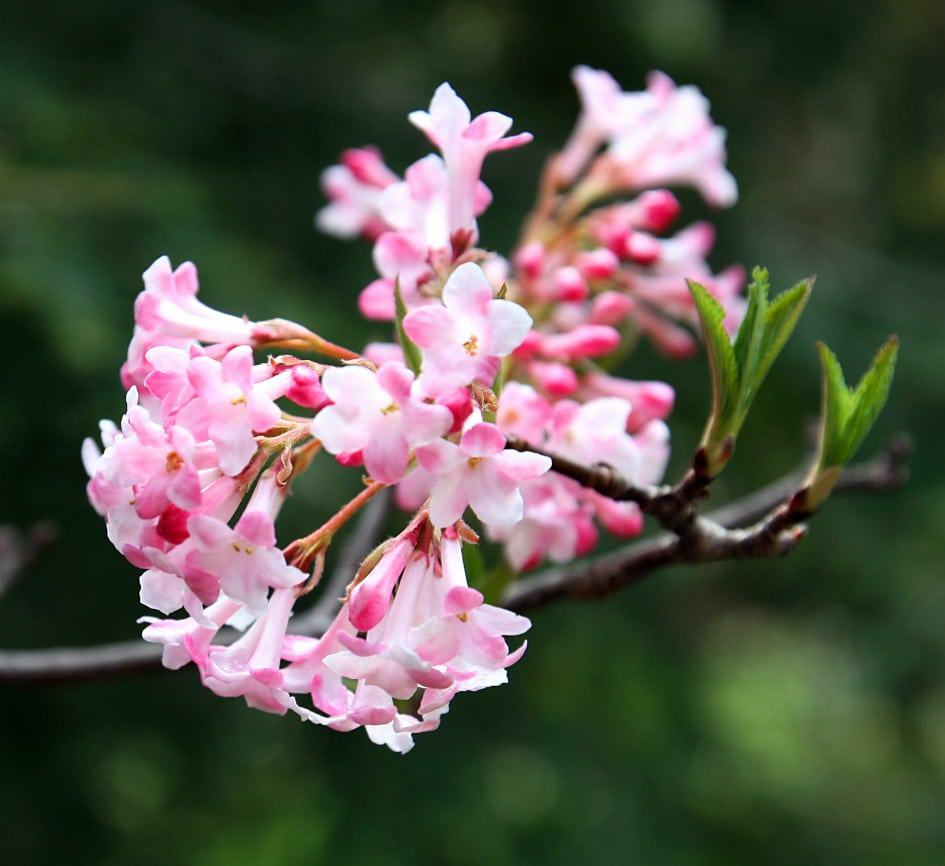
I opened the door Saturday morning, and despite a fresh snowfall, I knew it was almost spring, because there was a mourning dove sitting on the hydro wire and the pungent odor of skunk in the air. These are traditional signs of imminent spring in my neighbourhood. I made the rounds of woody shrubs in the front and back gardens to check on bud development, and was pleased to find all are swelling, and the earliest are close to opening. Also, all the snowdrops are above ground and showing their flowers.
The Cornelian cherry (Cornus mas, Zone 5) and viburnums ‘Dawn’ and ‘Charles Lamont’ (Viburnum x bodnantense, Zone 6) have flower buds near to bursting. These shrubs bloom together, and to my knowledge are the earliest to flower in Southern Ontario. It seems this year they will be flowering very early, indeed. Another indicator plant in my garden is the Italian honeysuckle ‘Praecox’ (Lonicera caprifolium ‘Praecox’, Zone 6) I grew from seed obtained through the Ontario Rock Garden and Hardy Plant Society (onrockgarden.com). It blooms shortly after the early shrubs, when it’s still necessary to wear a coat in the garden. I’m happy to report that the honeysuckle buds are looking fat and perky.
If the arrival of spring is going to be expedited, then I’d better check the inventory of gadgets and accessories necessary to get the season off to a good start. I’ve already gone out to the garage and shuffled through the tools, sent the lawnmower out for sharpening, and counted the large containers still in serviceable condition (not enough, must get more). There are several smaller items, equally important, that I use all summer, and it’s aggravating in the extreme if none are in the drawer when needed. First is a supply of tree hooks (metal rods with a hook at each end) in varying lengths. I find it frequently necessary to hang things from tree limbs, such as hummingbird feeders (bet you already guessed that!), occasionally a basket of flowering annuals and, of course, my Japanese garden gong. Placement for these things is usually inflexible, and available tree branches aren’t always at the height I need them. Having long and short hooks lets me use one long hook, or several short ones hooked together, to reach the best supporting limb.
I also need lots of vine clips, indispensable for anchoring clematis, tomatoes and other climbing plants. I also use them to attach peony stems to lightweight bamboo stakes (if, like me, you’ve neglected to get the peony rings on the plants early enough), climbing roses, and any other tall blooming stems that would otherwise topple over. I also need a roll of basic light-gauge wire (and wire cutters), essential for quick repairs to broken sections of trellises and fences. By the way, many secataurs have a wire-cutting notch at the back of the blade; you may want to check yours for this handy feature.
What I absolutely never want to run out of are rubber washers. It’s so frustrating to have a hose or watering device that leaks half the water out at the nozzle connection. This happens when there is an ineffective washer (unless you’ve run over the brass coupling with a car, which I have done), usually one made of vinyl. It’s what you’ll find installed in a new hose or water wand, and certainly takes the joy out of using the things, as they usually begin leaking. Use a small screwdriver to lift out the vinyl washer and push in a new rubber washer, using your thumbs to push it into position all around the circle. This will certainly keep you smiling and change your gardening life!
Other posts by Judith this week:
Posts by Judith last week:








